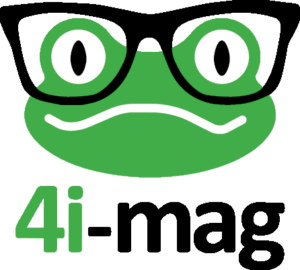At its most basic, blockchain is a technology for storing data. It is attractive because of its inherent security, in-built trust mechanisms, and lack of centralised control.
In general, rather than keeping records in one place — a single company’s servers — the users of a blockchain each hold instances of identical records. These records, known as a distributed ledger, cannot be deleted, only added to. And to do this, there must be agreement between users of the network. Only once consensus is reached can records be added to the blockchain.
In practical terms, as records in a blockchain are encrypted, time-stamped, and built on top of one another, it is extremely difficult for anyone to change information maliciously. Even if they were to succeed in doing so, any change in the content of a historical record would alter its hash, or ‘fingerprint’ — invalidating all subsequent records in the chain.
This intrinsic architecture makes blockchain technology highly appealing for any business looking for guarantees of security, traceability, and trust. In essence, blockchain technology makes collaboration possible, even between parties that do not know one another.

While the global digital space is indispensable, it is also increasingly unsafe and untrustworthy. Not only does blockchain appear to hold the answer to tamper-proof data storage, but through smart contracts blockchain can even render conventional arbiters of contractual agreements redundant.
Smart contracts are programs that run on a blockchain. They represent agreements between parties which execute independently once specific conditions are met. Smart contracts remove the need for trust by guaranteeing the outcomes of an agreement take place as specified.
They could be used to automate business transactions or insurance pay-outs, or even to create entirely new tokenised incentive systems — for instance, encouraging positive climate action or other forms of social good through automated, reliable rewards.
These features of blockchain technology not only have massive use case potential right now, but they will also almost certainly change how the economy and the world function in the future.
Obstacles to adoption
There have already been incredible developments in the blockchain world. From the evolution of new distributed business ecosystems to top athletes choosing to have their salaries paid in Bitcoin, to the NFT craze that is now picking up pace — the future is almost visible over the horizon.
But, as with all emerging technologies, the number of people with the necessary expertise to apply blockchain in a business context is limited. Up to now, real-world applications have been bound largely to the realm of cryptocurrencies.
There are several organisations doing their part to bring the business applications of the technology forward. Ethereum, Hyperledger Fabric, and Corda are the most prominent examples.
But not everyone can hope to leverage such specialised talents.
For many companies, blockchain is too unfamiliar, unformed, and risky to even consider — let alone correctly assess in terms of return on investment. Clearly, these kinds of hurdles can stifle the development of a budding technology and limit its progress towards mainstream adoption.

Tomorrow’s technology, today
This is where blockchain-as-a-service (BaaS) plays a crucial role.
Just as software-as-a-service companies made cloud models possible for the many, third parties can facilitate the uptake of blockchain by removing the technical and financial barriers to entry. These companies might simply offer the infrastructure, or they could provide additional services, even simplifying things to allow non-technical users to reap the benefits.
The possible applications span virtually every industry.
Blockchain technology can create far clearer traceability and transparency within the supply chain, through trustworthy real-time tracking of parts. It can be brought into the healthcare space, to keep perfect records of any individual’s medical history. This would allow service providers to seamlessly collaborate and offer highly personalised care.
Blockchain use cases in the financial world are already bearing fruit. FinTech is a highly regulated, and to the consumer, opaque industry with layers and layers of intermediaries. But on a blockchain, many steps of financial services can be removed.
Time-consuming tasks like collaboration between different entities, credit checks, audits, KYC — knowing who you are dealing with for certain — all become automatic processes because of the architecture.
The BaaS model, now growing in prominence, allows companies to experiment in these spaces with all the benefits of the technology, but a fraction of the risk or cost.
Blockchain Evangelists believe that the technology will soon underpin the workings of a next-generation internet, so-called Web3.0. But for businesses to realistically participate in this transformation, they need to first learn how.



